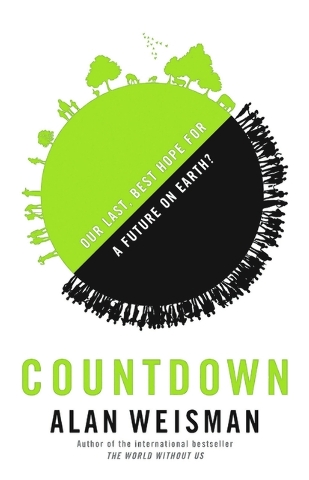Taking a look at the ‘Countdown’ to save the planet
There are too many people on the road.
That’s what you thought on your commute today. Too many cars, too much traffic and, while you’re on that rant, crowds seem to grow bigger each year, too. Nobody stays home any more; or at least that’s how it seems.
Seven billion people in the world and they all have to go where you are. And in the new book “Countdown” by Alan Weisman, you’ll see it’s going to get worse…
In the year 1900, our planet held 1.6 billion people. Spread over seven continents, there were resources and room for everybody, including various species of animals, birds and plant life that created a good biodiversity.
Now, just over a hundred years later, the world’s population has doubled — twice. It took an unbelievable “12 years…to go from 6 to 7 billion” people. For scientists, that’s a sobering cause for concern — especially since humans add another 80 million people to the Earth each year.
But how many people can the Earth hold? If we’re reaching that threshold, how do we convince the world’s population to reduce those numbers? How do we adjust for the changes, economically and socially, that such a reduction would create?
And if we don’t adjust, “What can’t we absolutely live without?”
In finding the answer, Weisman looks at the world in general. He visits Palestine, where some 12 million people live on a relatively tiny sliver of land. He looks at Pakistan, and a population that’s tripled since 1970. He studied China, its one-child policy, and a gender imbalance that will affect its citizens as they age. He visited Niger, where children die and women clamor for birth control.
Weisman looks at Israel, where entire species of birds have been decimated. He seeks answers in rural China, where a poison was banned and the return of storks brought better rice to the hungry. And he visits Japan, where the whole country is now forced to attempt “prosperity without growth…”
In the end, the solution is borderline palatable, and quite touchy. What Weisman found — and what scientists believe would offer hope — is a solution that won’t be easy, but may be very necessary.
Without it, the planet may “crash.”
So you say you love a good, scary novel? You’ll throw those things away when you read the real scares in “Countdown.”
Filled with sobering facts and statistics and loaded with controversy, this book is going to make you think — which is what I loved about author Alan Weisman’s last book and what I love about this one.
In examining the evidence and the works of experts, he presents information and finds an answer that is awesome in scope and fearsome in reality — and what’s amazing is that many (including several U.S. presidents) have long supported what Weisman discusses.
Without a doubt, this book is going to stir up a bees-nest of much-needed debate. The alternative simply boggles the mind, so sit down and read “Countdown”… because three’s company, but seven billion’s a crowd.
“Countdown” by Alan Weisman, c.2013, Little, Brown $28.00 / $31.00 Canada, 528 pages
















